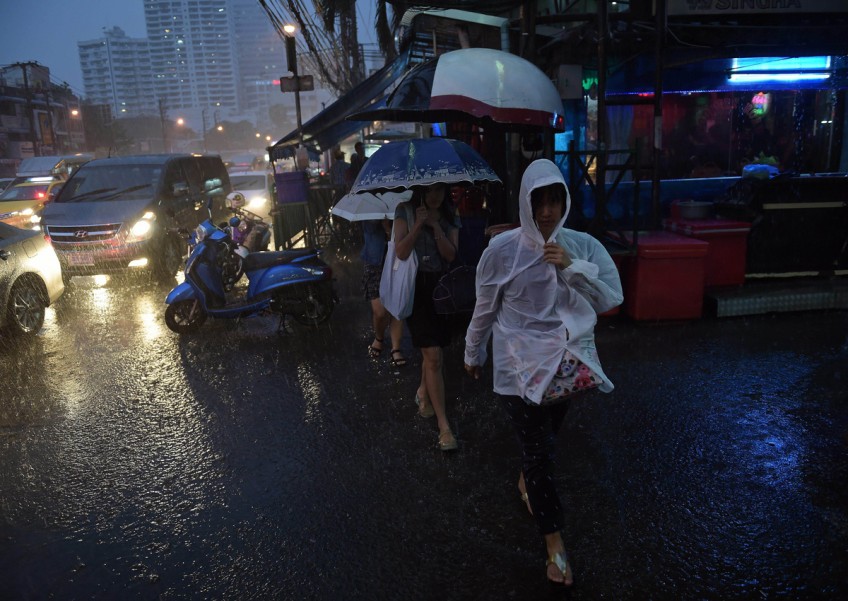Asia's coastal megacities at nature's mercy

From Mumbai to Shanghai, Asia's rapidly expanding coastal megacities face an ever-growing threat from more powerful storms.
Insurers and disaster risk experts say booming infrastructure and business investment, often with little regard to the threats from building close to the sea or rivers, are heightening the dangers.
Hurricane Katrina's rampage through New Orleans 10 years ago rewrote how insurers and city planners viewed the risks from a direct hit by a major storm, particularly the damage caused by storm surges.
Katrina killed more than 1,800 people and flooded 80 per cent of New Orleans with a storm surge of up to 8m. It remains the largest windstorm loss and the costliest disaster in the history of the global insurance industry, causing as much as US$125 billion (S$176 billion) in overall damages and more than US$60 billion in insured losses.
But with Asia's coastal megacities growing at breakneck speed, insurers fear costly disasters of a similar or greater scale are only a matter of time. Adding to concerns are rising sea levels, more extreme rainfall events and predictions of typhoons and cyclones becoming more powerful because of climate change.
The Asian Development Bank says an estimated 1.2 billion Asians will move into cities over the next 35 years. A large number will likely head to coastal megacities, many of which have industrial parks that are crucial to the global automotive, electronics and appliances trade.
"With such rapid increase in population, the coastal megacities are at high risk from natural hazards," Ms Preety Bhandari, head of the Asian Development Bank's Climate Change and Disaster Risk Management Division, told The Straits Times. Some cities lacked the capacity to properly plan and regulate urban development, increasing the risk from storms and flooding, she said in an e-mail.
Global insurer Allianz recently quantified the risks to Asia's coastal megacities. In a study released this month, the insurer estimated that losses across the region are expected to rise exponentially.
In the next 50 years, Asia will have eight of the world's 10 cities most exposed to coastal flooding from storm surges and wind damage.
These include Mumbai, Tianjin, Bangkok and Tokyo. A decade ago, only three Asian cities were on the top-10 list, all of them in Japan.
By the 2070s, the asset exposure of the world's large port cities is projected to rise to US$35 trillion, more than 10 times the level of 2005, when Katrina hit. Allianz also found that the growth in exposure is far outpacing take-up of insurance coverage.
Asia has already faced a number of storm disasters, leading cities to take stronger precautions, but more still needs to be done.
The 2011 Thai floods killed nearly 900 people, inundated parts of Bangkok and severely damaged major industrial parks outside the city, causing more than US$10 billion in insurance losses. Many industrial parks quickly built higher flood barriers and some factories raised their production floors.
Floodwaters from tropical storm Ketsana in 2009 rose more than 6m and inundated more than 80 per cent of Manila. Floods in late 2010 and early 2011 also inundated large parts of Australia's Queensland state, disrupting mining and causing severe damage in Brisbane.
"The events in recent years have resulted in several Asian megacities stepping up their disaster and risk management mitigation efforts," Mr Mark Mitchell, CEO Asia of Allianz Global Corporate & Specialty, told The Straits Times, a view echoed by Ms Bhandari.
He pointed to Shanghai installing flood gates and levees to protect the city from major floods. Bangkok has also improved waterways and pumping capacity.
"There is nothing inevitable about a continuing pattern of growing disaster risk," said Ms Bhandari. "The risk can be significantly reduced when addressed as part and parcel of urban development, thus contributing to greater resilience of the urban areas."
The Asian Development Bank has invested more than US$10 billion over the past 15 years to implement early storm warning systems in Bangladesh, and extensive flood control projects in Pakistan and Indonesia. Risks, though, remain. Mr Mitchell said China has the biggest flood loss potential for industrial parks and pointed to Guangzhou, Shenzhen and Tianjin as high-risk areas.
The Meteorological Service Singapore (MSS) said scientific studies have shown an increase in the proportion of more intense tropical cyclones in the Western Pacific. It told The Straits Times there was a decreasing trend in tropical cyclones in parts of the South China Sea and an increasing trend along the east coast of China over the past 40 years.
"Most studies do suggest there will not be an increase in the number of storms in the region, and only the intensity will increase," the MSS said in an e-mail.
Asia's rising risks are a major concern given the region's increasingly central role in the global economy.
"It is expected that, in the near term, the coastal megacities of Asia will be battered by stronger tropical cyclones and inundated by coastal flooding," said Ms Bhandari, adding that nine of the top-10 cities in terms of population exposure were expected to be in Asian developing countries.
"Unfortunately, it will be the poor, living in low-lying hazard-prone areas of these cities and with limited access to basic infrastructure, who are the most at risk," she said.
dfogarty@sph.com.sg

This article was first published on August 29, 2015.
Get a copy of The Straits Times or go to straitstimes.com for more stories.